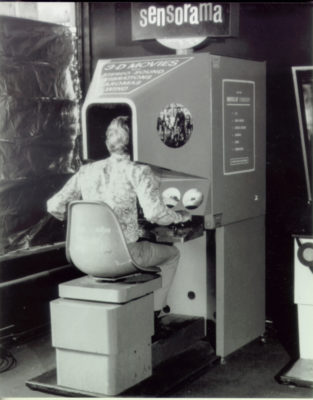
Evolutions in Virtual Reality
Virtual Reality, or VR, has come a long way. The idea of creating a second world is not a new one, and some experts even believe that panoramic paintings were very early attempts to do just that. There are many references to different types of VR in literature going back hundreds of years, including in Stanley G. Weinbaum’s short science fiction story of 1934 titled Pygmalion’s Spectacles.
 The phrase Virtual Reality was coined in The Theatre and Its Double, a book by Antonin Artaud, where it was used to describe the illusory nature of objects and characters in the theatre. The 1958 English version of the book was a translation of the original French, which was published in 1938.
The phrase Virtual Reality was coined in The Theatre and Its Double, a book by Antonin Artaud, where it was used to describe the illusory nature of objects and characters in the theatre. The 1958 English version of the book was a translation of the original French, which was published in 1938.
Advancing VR Technology
Today, VR is perhaps best described as computer technologies that use software to generate realistic images and sounds, as well as other sensations a little less commonly. The hardware and software elements all need to interact with each other smoothly, which may happen via wired or wireless connections.
With VR, existing or imaginary environments are created, and the user’s presence in these settings is simulated so that they can interact and experience them in a whole new way. Movements of the body control the environment and the activities that occur, so each VR simulation is unique. Most VR experiences take place with a conventional screen display or with a headset, also called a head-mounted display.
Intentional Sensory Stimulation
 The earliest mechanised form of VR, outside of fantastically imagined situation in the literary world, was Morton Heilig’s 1962 Sensorama. Heilig had the idea in the 1950’s that an Experience Theatre, involving all the senses, should be created. The Sensorama did just that, and while you were seated at the machine a short film was screened while all 5 senses were engaged.
The earliest mechanised form of VR, outside of fantastically imagined situation in the literary world, was Morton Heilig’s 1962 Sensorama. Heilig had the idea in the 1950’s that an Experience Theatre, involving all the senses, should be created. The Sensorama did just that, and while you were seated at the machine a short film was screened while all 5 senses were engaged.
A few years later, in 1968, Ivan Southerland and his student Bob Sproull created what many believe to be the first VR head-mounted display. It was so heavy that it had to be suspended from the ceiling, a situation that led to its official name being the Sword of Damocles!
The Aspen Movie Map, a crude simulation of Aspen, was created at MIT in 1978 and then in 1982 Atari got involved in the burgeoning industry and founded a lab dedicated to VR research. This was closed two years later due to Atari Shock, as the 1983 North American video game crash was called, but many of its staffers continued VR development and research.
You Might Also Be Interested In: Gamer Alert! 7 Best Gaming Laptops for College
The diaspora from the Atari lab led to the founding of VPL Research in 1985 by Jason Lanier, and the creation of many early VR devices such as the Audio Sphere and the Data Glove. As VR moved into the 1990s it became more mainstream and accessible, not least because of Howard Reingold’s seminal 1991 text simply titled Virtual Reality.
A Step Forward
Over the 1990s, however, although VR was more widely accepted it was also considered something of a gimmick that many people thought would fade away. This has definitely changed; the technology for VR has turned a corner and is developing along many lines, while the applications for what it can be used for are growing all the time. Lightweight units have made VR more functional, and as an increasing number of tech companies release VR products, the price point should lower and become more accessible.
The future of Virtual Reality looks to be very exciting, and this technology is certainly one we can expect to see more of in the next few years.